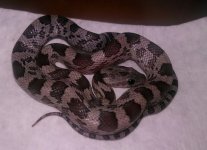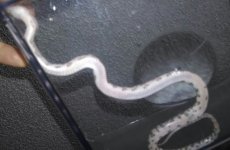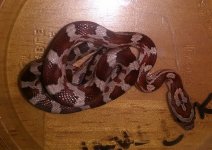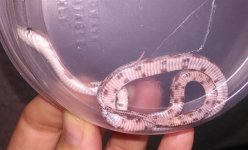DuxorW
Derailer of Threads
I was asked to post results here from a friends Cinder clutch.
The Sire was a Homo Cinder (PH Hypo) Dame was a Classic (Het Cinder) no other Hets involved with the female. 8 eggs hatched and the ratio was 1.7
Temps were steady at 82 degrees.
Steve, do you know which of the offspring were cinder? As it stands now some females can produce both male and female cinders and some only make male cinders clutch after clutch. The sex ratio of the overall clutches (without regard to cinder) seems unbiased when they are considered together (there will obviously be some clutches that are skewed more towards male or female offspring).






